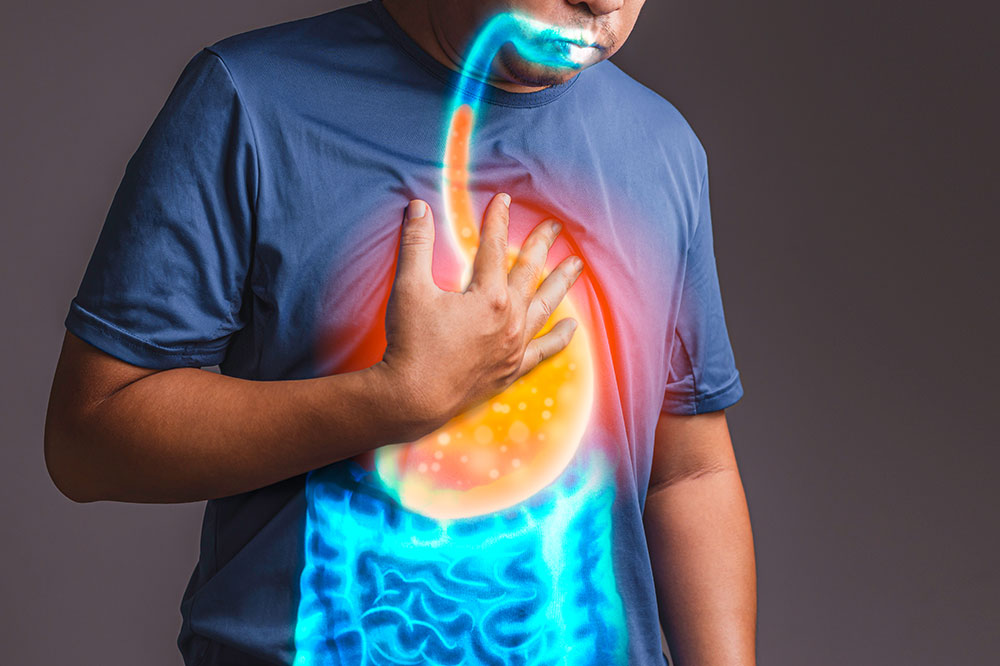
6 Risk Factors for GERD
The National Institute of Diabetes and Digestive and Kidney Diseases, NIDDK, estimates that GERD affects one in five people in the United States. GERD or Gastro-Esophageal Reflux Disease is a condition characterized by the recurrence of acid reflux symptoms, like heartburn, regurgitation, and difficulty swallowing more than twice a week. A weak Lower Esophageal Sphincter causes GERD, but several factors increase the risk for GERD. The most important of these risk factors are listed below.
1. Genetics
Research indicates that GERD could have a genetic component. Heritable muscular or structural problems in the stomach or esophagus can increase the risk for GERD. A DNA variant, GNB3 C825T, has been implicated in causing this digestive issue. Barrett’s esophagus and esophageal cancer are comorbidities that increase the risk of GERD. Both have a genetic component and are heritable to some extent. Recent development in epigenetics suggests that even with genetic predisposition, environmental and lifestyle factors can trigger or suppress gene expression.
2. Gender
Women undergoing hormone replacement therapy and those who are pregnant have more significant amounts of estrogen and progesterone. These hormones relax the LES, which can lead to GERD. Women are at greater risk of suffering from hiatal hernia that increases the likelihood of acid reflux. Men are more susceptible to having Barrett’s esophagus and esophagitis that change the esophagus, causing inflammation and ulcers, thus increasing the risk of GERD.
3. Health conditions
Like a lot of health conditions, comorbidities can increase the risk of developing GERD. Autoimmune diseases like Scleroderma can affect the esophagus making GERD more common. Asthma, COPD or Chronic Obstructive Pulmonary Disease, and GERD seem to correlate, though doctors are unsure which is the cause and which is the effect. Some medications also increase GERD and worsen symptoms. These include aspirin, Motrin, Advil, and Aleve. These medications cause peptic ulcers, worsen heartburn and esophageal irritation and weaken the LES.
4. Diabetes and obesity
Diabetes, primarily type 1, develops gastroparesis, a condition that causes delayed stomach emptying. When you do not empty your stomach on time, the pressure on it increases. Then it raises the risk of reflux and makes you prone to develop GERD. Obesity increases the load on the abdomen, worsening GERD. Additionally, obesity heightens the risk of diabetes, thus completing the vicious cycle between the three conditions.
5. Digestive conditions
Gastro-Esophageal Reflux Disease seems to be more common in people with celiac disease. However, those who do not consume gluten have reduced symptoms. Hiatal hernia occurs in the upper part of the stomach, and it lowers the pressure on the LES, causing reflux. Other conditions involving impaired stomach functioning, concerning abnormal nerve or muscle function, or causing food with stomach acid to be digested slower can all raise stomach pressure and increase chances of acid reflux recurring.
6. Lifestyle factors
Apart from diseases, people’s decisions regarding their lifestyles can increase or decrease GERD occurrence and symptoms. Smoking, like obesity, increases the risk of Gastro-Esophageal Reflux Disease. Having big meals right before sleep time increases the risk of acid reflux. Smaller, less frequent symptoms have the opposite effect. Fatty, spicy foods, citrus fruit, tomato, onion, garlic, mint, tea, coffee, and alcohol increase reflux.


